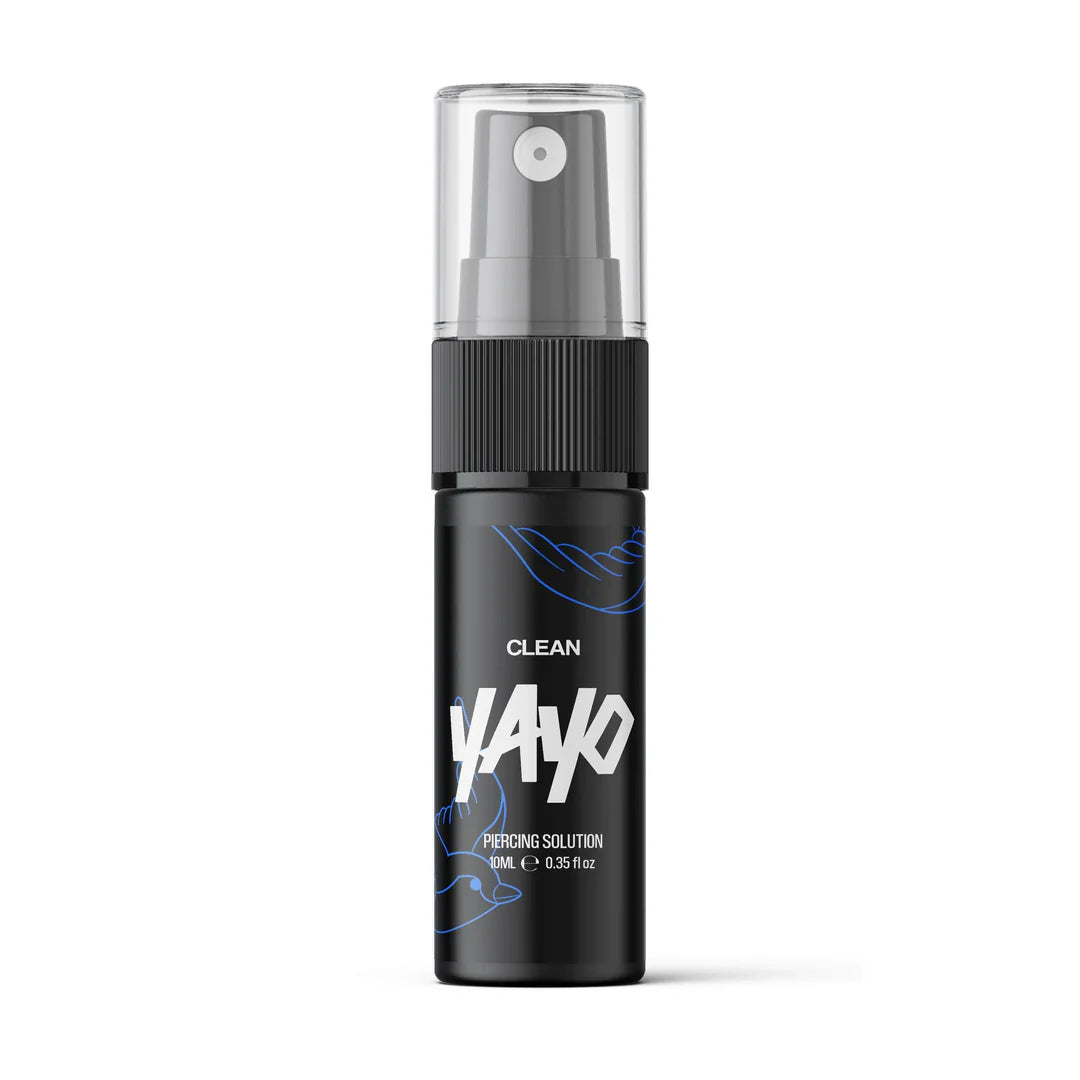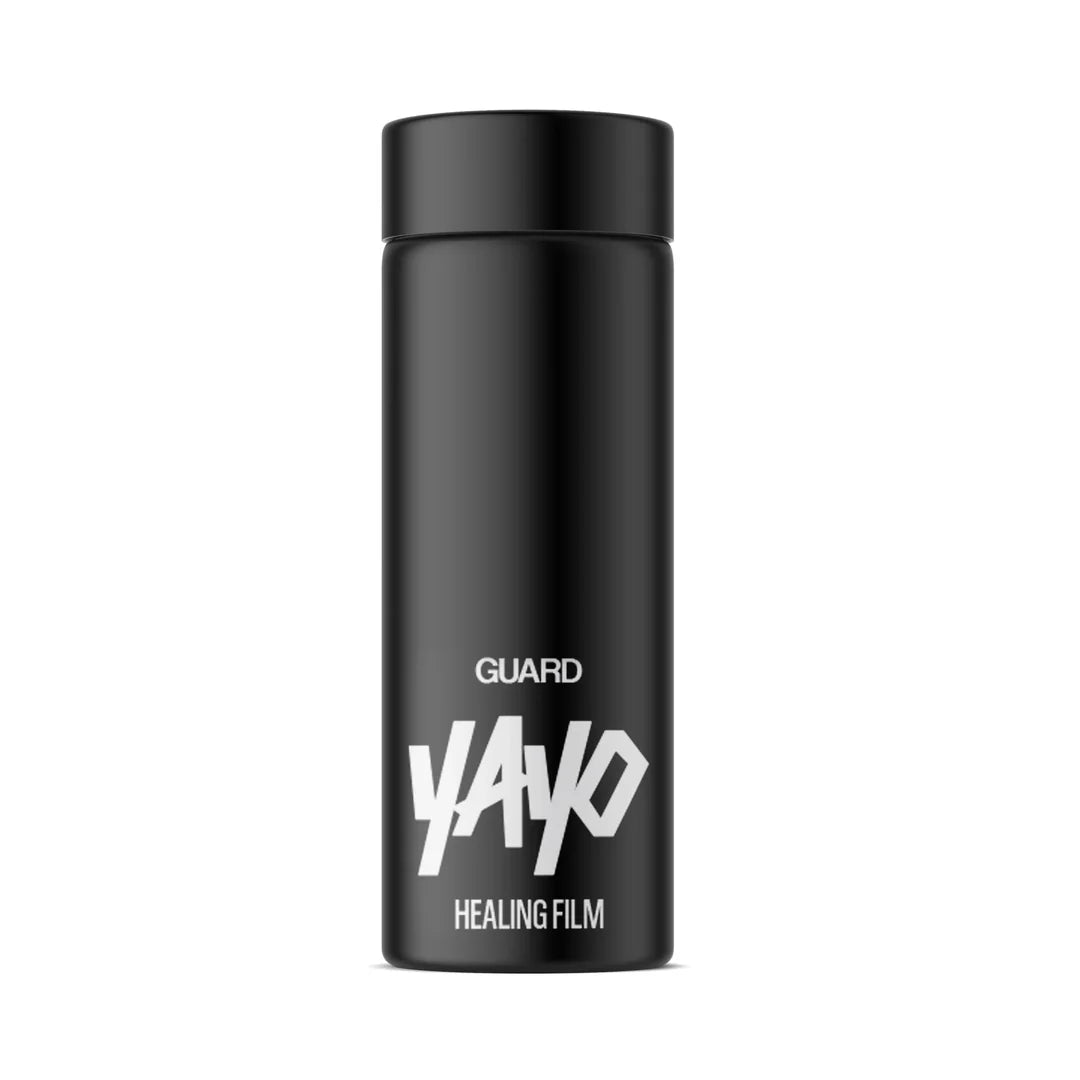Tattoo technology take over. How machines threaten the future of tattooing as we know it.

For nearly a decade now technology has been banging on the door of the tattoo industry, threatening to change body art as we know it. So far tattooing has resisted these cybernetic advances, but new technologies are on the horizon that could change tattooing forever. Are we about to see a war against the machines? Yayo sent out resistance fighter Matt Haddon-Reichardt, to find out.

Back when I started writing for the tattoo trade, in the spring of 2012, Nokia announced new technology, that they claimed would revolutionise tattooing. For the first time in its history tattooing would transcend body art and enter the world of the cyborg, part human and part machine. Their idea was to use tattoos to create hepatic feedback. The tattoo would act as an interface between a mobile phone and the human body. By using magnetic ink in a tattoo, the tattooist could link this to a smart phone so that when the phone received a call or a message the ink in the tattoo would start to vibrate.
"The backpack I was wearing, with all the battery power for the camera and microphones, overheated and burned me pretty good."

This may find this idea farfetched but I did my research and Nokia were so serious about their idea that they filed a patent for this hepatic feedback technology. Over the next few months I began to dig deeper and realised Nokia’s cyborg tattoos were the tip of the iceberg when it came to body art and body hacking.

Body hacking is the application of the hacker ethic to improve the human body with DIY cybernetic devices or introducing biochemicals into the body to enhance or change the bodies' functionality. It is also known as biohacking, and these biomechanical engineers have their eyes firmly fixed on tattooing.
To me, nearly a decade ago, it sounded both exciting and worrying. I’d heard horror stories of red ink, containing iron particles, over heating in MRI scanners as the magnetic wave’s pulsed energy into the metallic ink. The result was burns and blisters. As the decade wore on, more and more biohackers jumped onto the tattooing band wagon but each time the revolution was poised to spill over into the mainstream; the cybernaughts retreated. It soon became clear why.

In 2013 interviewed French based artist Karl Marc who took tattoo biohacking to the next level. He made a history, a year before to Nokia’s patent, by creating the world’s first animated tattoo. When I read about Karl I knew I had to speak to him,k as his tattoo could potentially open up a whole new realm of possibilities for the future of tattooing. I was surprised by what I found.
“The pressure of this project was intense right from the beginning,” explained Karl over the phone from Paris.
“The whole process took several months of planning. Ballantines Whiskey first contacted me because they wanted to spotlight a tattoo artist as part of a broader advertising campaign. I went through two castings. I later learned that they had chosen me out of 40 artists. At the same time, I was battling with myself about whether I wanted to use my art to benefit a major liquor brand. After meeting with them and talking about what we could do, I made the decision that the project seemed like a worthwhile concept. They assured me that they would not ask me to directly promote their product and that just being associated with tattooing would be attention enough for them. In the end, they were right; the interest in the project brought them a lot of publicity.”

Rather than kick-start a tattoo revolution Karl vowed never to repeat the experience.
“The actual tattooing was broadcast live on Facebook via a helmet camera. It took four hours and was incredibly complicated. What the viewer doesn’t see is that there was a team of 10 technicians helping to ensure that the live broadcast went well. They also couldn’t know that the helmet cam kept dipping in front of my eyes, that talking for four hours pretty much killed my vocal chords, and that the backpack I was wearing, with all the battery power for the camera and microphones, overheated and burned me pretty good. It was not the optimum environment for the application of a tattoo. And before all this, we went through a lot of trouble finding a code that would work and linking the animation to it.”

The animated tattoo worked though a tattoo of a QR code linking to a mobile phone. Once the QR code was scanned an animation would be loaded up and played on the phone. The tattoo on the skin would not actually move, it simply acted as a key to unlock the animation.
“I do not see myself developing this further. While it was a fun experiment, the nature of the code is too rigid and unwieldy to be inserted into most tattoos. Because tattooing has become more widely accepted, it has attracted artists with great skills. These tattoo artists are constantly pushing the boundaries of the possible and enhancing the techniques used for the application. The future of tattooing lies in the art skill, not the computer. Currently the computer is a good tool to help the design of a tattoo; it’s not generally the purpose of the tattoo. I think that my, and almost everyone else’s tattooing will stay focused on the actual art for the foreseeable future.”

I left the interview disappointed. I’d hoped I’d be hopping on a plane to France to get my own animated tattoo. Much like the Nokia vibrating ink patent, Karl’s tattoo seemed like a novelty, an advertising gimmick rather than a step into the beyond. As my writing career took off I continued my research and came across Dmitry Morozov. In 2014 I jumped on a plane and headed to Russia to interview him. Dmitry had pushed beyond simply using a tattoo as a code to unlock technology; he had turned his tattoo into music.
"Technology is everywhere now. We can’t be separated from it; it’s now a part of us."
“This is the beginning of my project ‘Reading My Body’,” explained Dmitry as we sat in his studio, surrounded by gadgets and gizmos of all kinds. It felt like I was in the props department of a Star Wars movie.
“We are surrounded by technology and we are increasingly dependent on it; the internet, Wi-Fi, Bluetooth, its everywhere. We have computers in our cars, in our watches and even our washing machines. We wake up with our cell phone, it stays with us all day then we go to bed with it. Technology is everywhere now. We can’t be separated from it; it’s now a part of us. That’s what inspired ‘Reading my Body’.”

Along Dmitry’s lower arm ran a precise, black, geometric tattoo. Dmitry proceeded to connect an elaborate electrical device to his arm that resembled a hybrid between a synthesiser and a printer. He turned the device on and it began to scan his arm. As it did so a cacophony of digital sound broke the air. Pulsing beats flipped into high analogue chimes before descending in to eerie computer drones. It sounded like the kind of digital sound scape Aphex Twin or Autechre would release. All the while Dmitry moved, flexed and twisted his arm; as he did so the sound changed. He reset the scanner and repeated the process; this time with a different set of arm movements. The music that emanated from the machine changed with each movement and while the score stored in the tattoo stayed the same each unique pattern of body movements creates a different song.
Unlike Karl Dmitry feels his technology represents the future of tattooing.
“It’s not only a reflection of this social trend, its hybrid art. I’m seeing how far I can push the envelope of body modification, art and technology. It’s like a living dream of how far technology can go, not only surrounding us but becoming part of our bodies and effecting the world around it creating a new reality.”

I left Russia impressed with Dymitry’s musical tattoo but felt that once again it was more of a novelty than a paradigm shift. The issue with putting codes in tattoos is that the human canvas is not a rigid one. Analogue information is a fixed pattern of 0 and 1’s. Any deviation in that pattern creates a corruption in the data. Tattoos change as the ink sinks deeper into the skin and they risk damage from sunlight, cuts, abrasions, burns or chemicals. Over time as the tattoos change the electronic devices that utilise them as a code would fail to recognise the pattern; they would in effect become useless.
This is something that has not escaped those who have stepped into the tattoo biohack arena and it certainly didn’t stop Olo Sabandija throwing his hat into the ring in 2019, when he created the world’s first augmented reality, tattoo video game.

“The principle is simple,” explained Olo over the phone.
“You need an image that can be easy to find for the app, you import that image into Unity, that’s a game development platform, as a marker and link your image’s 3D assets to that marker so it mimics its position. When the app is running it opens the camera and once it identifies the marker it matches the position of the virtual marker with the image of the real one it sees in the camera, and the stuff you linked to the marker in the app follows your real image on the screen.”
“Making it work with a tattoo was a headache."
Where Olo hit a stumbling block was once again the instability of ink injected into human skin.
“Making it work with a tattoo was a headache. I put the project on hold for 2 years because it worked fine with printed paper markers but I couldn't make the app read anything on my arm. I experimented by transferring inkjet prints onto my skin by printing over a sheet with tape but it was hit and miss. A friend that I met on a Game Jam showed me his AR tattoo and gave me a tip; to use only straight lines, sharp angles and high contrast.”
“Once I had a stable marker I sketched my scene of Green Hill from Sonic the Hedgehog and all the things I wanted in it; then I built it in blender. Most of the textures I used were ripped from actual sprites of the game but for the Badniks I had to paint them, but I picked the actual colours from the original sprite.”

Olo’s project was exciting, revolutionary and super cool. I couldn’t wait to get my own augmented reality tattoo and have sprites leap from my arm and all around me. Then Olo hit another snag. He messaged me some weeks after I interviewed him for Yayo, to explain.
““I think I'll have to use a different tool if I want to sell AR for tattoos, Vuforia's license is absurdly expensive. I contacted them and they don't want to reach a reasonable compromise, but I'll let you know as soon as I have another solution.”

A few more weeks passed before Olo emailed me with the sad that news his dream of augmented reality for the masses was on hold.
“By the way the bad news is that I've been trying different AR engines, but all of them have very expensive licenses, and so far only Vuforia is robust enough to read a tattoo, and its developer license has a limit of 1000 scans if I understood it right. I need to dig a little more to see if the license number is somehow linked to the unity install. If I’m going to make a business or of it I'm not entirely sure how legal it would be to have the customers sign up to get a developer's license and forward it to me but it's the only solution that comes to my mind.”

So once again my dream of becoming a human tattoo cyborg was dashed. Then this month I came across an interesting news article from the BBC. It headline stated that the future of tattooing could be in electric tattoos. Intrigued, I delved in the article; only to once again face disappointment.
While artists are dreaming big of implants and nano technology that will create real, moving, animated, colour changing tattoos we are at this time limited to wires and LED’s embedded in transfers; essentially a sticking plaster. Tattoos go in the skin, not on them. It’s like calling a self balancing scooter a hoverboard; despite the fact it doesn’t actually hover. These electronic transfers that stick to the skin are falsely advertising themselves when they talk about being tattoos. Anyway electronic transfers aren’t even new news. I wrote an article on them back in 2014.

So where does that leave us, 9 years after I started my quest to uncover the future of tattooing. Well technology has revolutionised tattooing over the past decade; even though it may not have led to human/machine hybrids. We have seen tattoo machines come on in leaps and bounds, from all quiet rotaries to recyclable cartridges and grips. Autoclaves have become more economical and vegan inks are now a mainstay of many studios. Green technologies have helped reduce plastic waste and there is even talk of semi permanent tattoo ink that will fade over time.

Aftercare is probably the area to see the most progress and it is thanks to companies like Yayo that the industry is finally moving on from creams containing animal based ingredients. So while it is nice to dream of the day when our tattoos will pulsate, move and glow we are probably best focussing on the fantastic art that is being produced by tattooists around the world. CAD, social media, and low cost international travel have transformed how tattooists design, market and deliver their body art. It is these advances we should be celebrating and leave the high tech tattoos to the cyberpunks.

A final thought from the author: "Its 9 years since I started writing for the tattoo trade and wow so much has changed. Gone are the magazines and the cyborgs are threatening to take over but the industry is healthier than ever and I've found real home at Yayo. I don't say Yayo is the best aftercare on the market because they pay me to. I say it because I believe it. If you want the best then use the best; use Yayo!"
Yayo, be part of the family!

Words by Matt Haddon-ReichardtImages by MNHR, NHS, Yayo and contributing artists.







